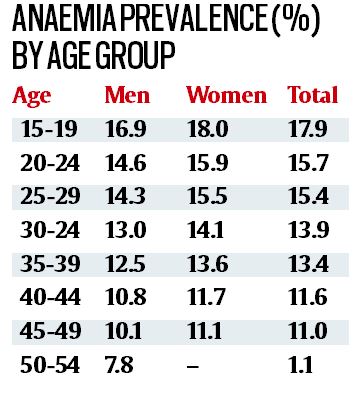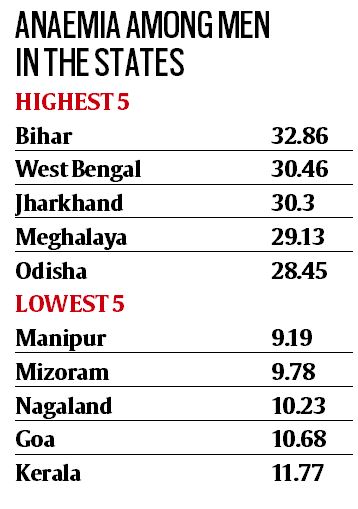Social Justice
Anaemia Among Men
- 11 Nov 2019
- 4 min read
Why in News
A recent study published in The Lancet Global Health has observed that 23.5 % of men (15-54 years age group) in India are affected with anaemia.
- Population-based studies on anaemia in India have mostly focused on women and children whereas men with the anaemia have received much less attention despite its adverse effect on health and economic productivity.
- An estimated 1.9 billion people (27%) in the world had anaemia in 2013 and 93% of these cases occur in low- and middle-income countries.
Key Points
- The study determined the prevalence of anaemia on the scales of mild (18%), moderate (5%) and, severe (0.5%).
- The prevalence of anaemia in men varied widely between states, ranging from 9 % in Manipur (lowest) to 33 % in Bihar (highest).

- Men with less education, less household wealth and those living in rural areas were more likely to have anaemia.
- Higher prevalence has been observed for younger age groups while the lowest prevalence has been observed for the age group of 50-54 years.
- Ideally, men in the group 20-34 years have the lowest probability of having anaemia.
- But, factors such as consuming smokeless tobacco, being underweight, level of urbanisation and household wealth are associated with a higher probability of developing the disease.
- Geographic and sociodemographic patterns of anaemia for men and women in India appear to be similar.
Anaemia
- The World Health Organization (WHO) defines anaemia as a condition in which the number of red blood cells or their oxygen-carrying capacity is insufficient to meet physiological needs.
- Iron deficiency is the most common cause of anaemia, although other conditions, such as folate, vitamin B12 and vitamin A deficiencies, chronic inflammation, parasitic infections, and inherited disorders can all cause anaemia.
- In its severe form, it is associated with fatigue, weakness, dizziness and drowsiness. Pregnant women and children are particularly vulnerable.
- In 2018, the government of India launched Anaemia Mukt Bharat (AMB) as part of the Intensified National Iron Plus Initiative (NIPI) Program for accelerating the annual rate of decline of anaemia from one to three percentage points.
- The target groups for AMB are Children (6-59 months, 5-9 years), Adolescent Girls & Boys (10-19 years), Women of Reproductive Age (15-49 years), Pregnant Women and Lactating Mothers.
Consequences of Anaemia Among Men
- It can decrease productivity by causing fatigue, creating difficulty in concentrating, and lethargy.
- Although male anaemia does not affect the intergenerational cycle of malnutrition but it may reduce overall work performance and quality of life.
Preventive Measures
- The distribution of iron tablets and food fortification with iron.
- Higher awareness about anaemia and various nutritional deficiencies.
Way Forward
The existing anaemia control measures in the country are majorly focussed on women and children. The inclusion of the males in the target population will help to eliminate anaemia completely from the country.




